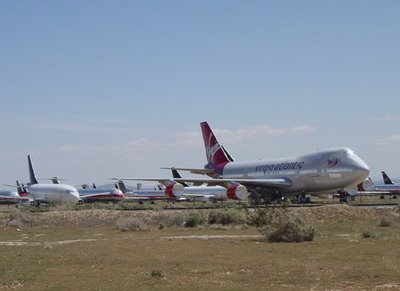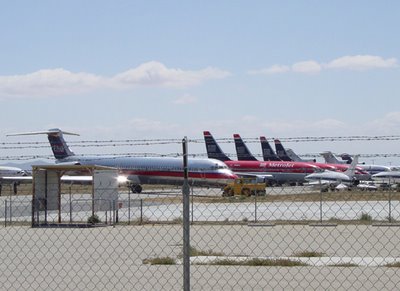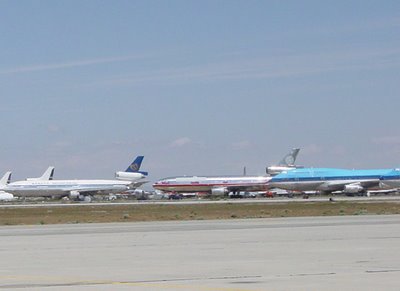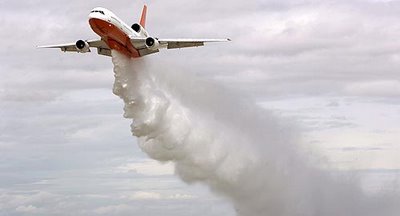An aerial dogfight is shaping up over Southern California as rival millionaires duel to see who will be first to get his jumbo jet water tanker aloft to fight wildfires.
One has his hopes pegged on a converted 747 cargo aircraft. The other is banking on a retrofitted DC-10 passenger plane.
At stake are potentially lucrative government contracts to help fight brush and forest fires. The rush to get the planes in the air comes as authorities continue grounding the World War II propeller planes that for half a century have dropped water and retardant on burning hillsides and forests.
So far, Sanford Burnstein of Tulsa, Okla., has a slim lead over Delford Smith of McMinnville, Ore.
Burnstein, owner of charter aviation company Omni Air International, has sunk $15 million into converting a DC-10 into a tanker. Last week in Victorville, his plane received Federal Aviation Administration certification for water-dropping operations and is awaiting approval for firefighting use by the Interagency Airtanker Board, a federal group based in Boise, Idaho.The DC-10: A tanker, converted by Omni Air International from a passenger jet, drops 12,000 gallons of water during a test over Victorville. It has received FAA water-dropping certification. (Don Kelsen / LAT)
But Smith is close on his tail. His company, Evergreen International Aviation, has yet to receive FAA approval for the Boeing 747 he has spent $40 million modifying. But he has strong government connections: Evergreen has been known as "the CIA airline" because of its work with the federal intelligence agency.
Evergreen had been scheduled to show off the 747's water-dropping capabilities Wednesday in San Bernardino, but the demonstration was scrubbed because of problems with the high-tech water tank and pump system.The 747: A water tanker, modified by Evergreen International from a cargo plane, releases up to 24,000 gallons of water over Arizona in 2002. The pressurized tanks nestled inside the fuselage can also drop fire retardant from between 400 and 800 feet at a speed of 161 mph. (Don Kelsen / LAT)
It is the water-dropping methodology that sets the two jumbo jet tankers apart.
Burnstein's DC-10 relies on gravity when it drops its water from external tanks bolted to the bottom of the plane.
Smith's 747 uses a pressurized system to shoot water from tanks nestled inside the fuselage. That allows the 747 to carry 24,000 gallons, while the DC-10 can handle 12,000 gallons.
Each is a vast improvement over the 3,000-gallon capacity of the largest aerial tankers now used by the U.S. Forest Service and other agencies fighting wildfires.
The fleet of modified military aircraft is dwindling as the aging planes are grounded for safety reasons.
"There will be nine or 11 conventional tankers available this year, down from 44 that were in use a few years ago," said Dennis Lamun, aviation program manager for the National Interagency Fire Center in Boise.
Can you imagine a 747 dropping water on a forest fire? Now I don't know how effective these two jumbo jets would be fighting the forest fires around the mountains of Los Angeles. Or could they handle the Santa Ana winds? But I will say it is an interesting thought, having these big jets take the lead as the next generation of fire fighting technology. And if these big jets can't seem to work for fighting fires, there are plenty of other jets to choose from here in the used jet lot:





No comments:
Post a Comment